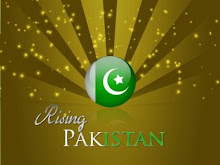Many in Pakistan think of Urdu-speaking people originally from the state of Utter Pradesh in present-day North India when they think of Muhajirs.
Actually what most people might not know is that the state of Utter Pradesh was manufactured by the British in the 1930s.
What most people also do not know is that most "Muhajirs" are not a common ethnicity but various peoples from different parts of the subcontinent. The only common trait they have is the common Hindustani language which is no the Lingua Franca of the subcontinent.
This does not mean their natives languages were Lashkari ('Urdu') or whatever you may call it.
I have met "Muhajirs" who trace their roots back to Bengal, South India and other part of the subcontinent. Most of them don't even know a word of Bengali or other languages of their parents.
I even met a person at a hospital who claimed he had a Tamil Muslim friend who's family migrated to Pakistan.
Even in her book Empires of the Indus, the British author Alice Albina writes that during independence, some forty four thousand immigrants from all over India migrated to Pakistan.
This information can be found in her book on page sixteen paragraph two. "Some forty four thousand Muslims government employees- tea boys and peons, civil servants and politicians; and their spouses, parents and children- took the train from all over India and came to Pakistan. Naturally, they hollered for housing, they camped in Karachi's school, they filled up its lovely green spaces with their clamorous existence."
Imagine these immigrants and their descendants now. Their numbers must have increased dramatically to millions knowing Karachi's massive population. To know the history of the "Muhajirs" and their presence in Pakistan, each ethnicity of a Muhajir family and their background must be investigated.
For decades "Muhajirs" have been lumped as a whole on the basis of a common first language they speak today. The purpose of this post is to show that is clearly not the case and that "Muhajirs" are from various backgrounds, both Indian and Non-Indian alike.
Actually what most people might not know is that the state of Utter Pradesh was manufactured by the British in the 1930s.
What most people also do not know is that most "Muhajirs" are not a common ethnicity but various peoples from different parts of the subcontinent. The only common trait they have is the common Hindustani language which is no the Lingua Franca of the subcontinent.
This does not mean their natives languages were Lashkari ('Urdu') or whatever you may call it.
I have met "Muhajirs" who trace their roots back to Bengal, South India and other part of the subcontinent. Most of them don't even know a word of Bengali or other languages of their parents.
I even met a person at a hospital who claimed he had a Tamil Muslim friend who's family migrated to Pakistan.
Even in her book Empires of the Indus, the British author Alice Albina writes that during independence, some forty four thousand immigrants from all over India migrated to Pakistan.
This information can be found in her book on page sixteen paragraph two. "Some forty four thousand Muslims government employees- tea boys and peons, civil servants and politicians; and their spouses, parents and children- took the train from all over India and came to Pakistan. Naturally, they hollered for housing, they camped in Karachi's school, they filled up its lovely green spaces with their clamorous existence."
Imagine these immigrants and their descendants now. Their numbers must have increased dramatically to millions knowing Karachi's massive population. To know the history of the "Muhajirs" and their presence in Pakistan, each ethnicity of a Muhajir family and their background must be investigated.
For decades "Muhajirs" have been lumped as a whole on the basis of a common first language they speak today. The purpose of this post is to show that is clearly not the case and that "Muhajirs" are from various backgrounds, both Indian and Non-Indian alike.



